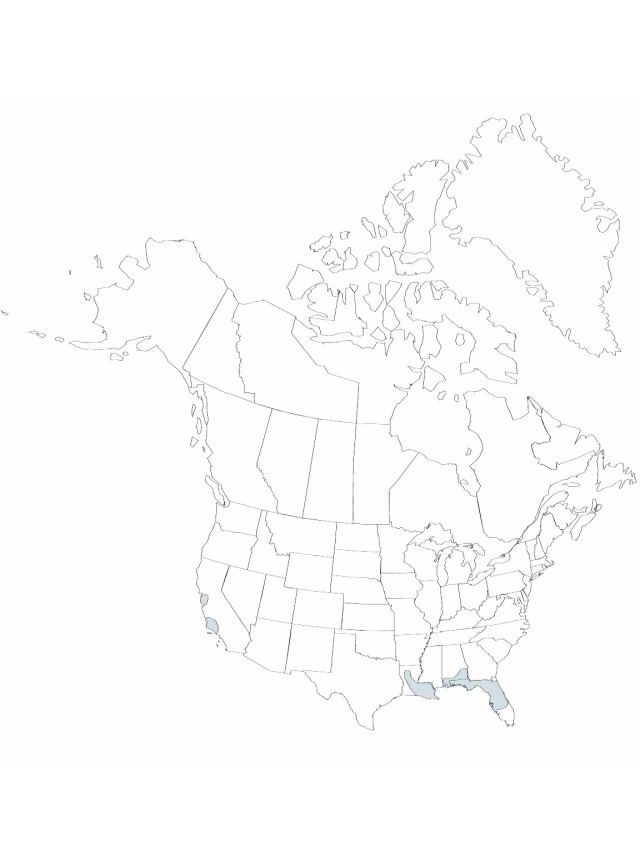Tradescantia fluminensis
Florae Fluminensis 140; plate vol. 3, 152. 1829.
Herbs, decumbent, rooting at nodes. Leaves 2-ranked; blade lanceolate-elliptic to ovatelanceolate, 2.5–5 × 1–2 cm (distal leaf-blades wider or narrower than sheaths when sheaths opened, flattened), margins ciliolate, apex acute, glabrous. Inflorescences terminal, becoming leaf-opposed, sometimes axillary from distalmost leaf-axil, 1–2 cyme pairs per stem; bracts mostly foliaceous, occasionally reduced. Flowers distinctly pedicillate; pedicels 1–1.5 cm, glandular-pilose; sepals 5–7 mm, midrib pilose with eglandular hairs; petals distinct, white, not clawed, 8–9 mm; stamens free; filaments white, densely bearded with white hairs.
Phenology: Flowering spring–fall.
Habitat: Woods, roadsides, and open areas, sometimes as weed
Distribution

Introduced; Ala., Calif., Fla., La., native, South America (Brazil–Argentina), Africa (South Africa), Australia
Discussion
This species was recorded north to North Carolina (J. K. Small 1933), but I have not seen any supporting records from Georgia or North Carolina.
Selected References
None.